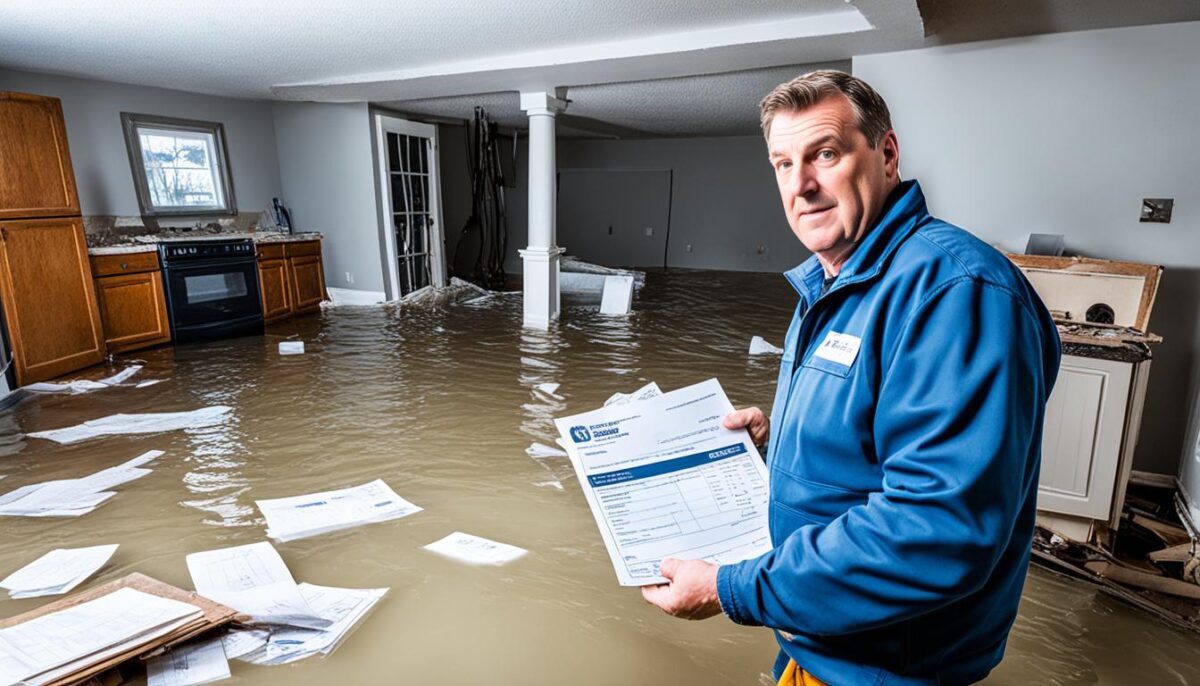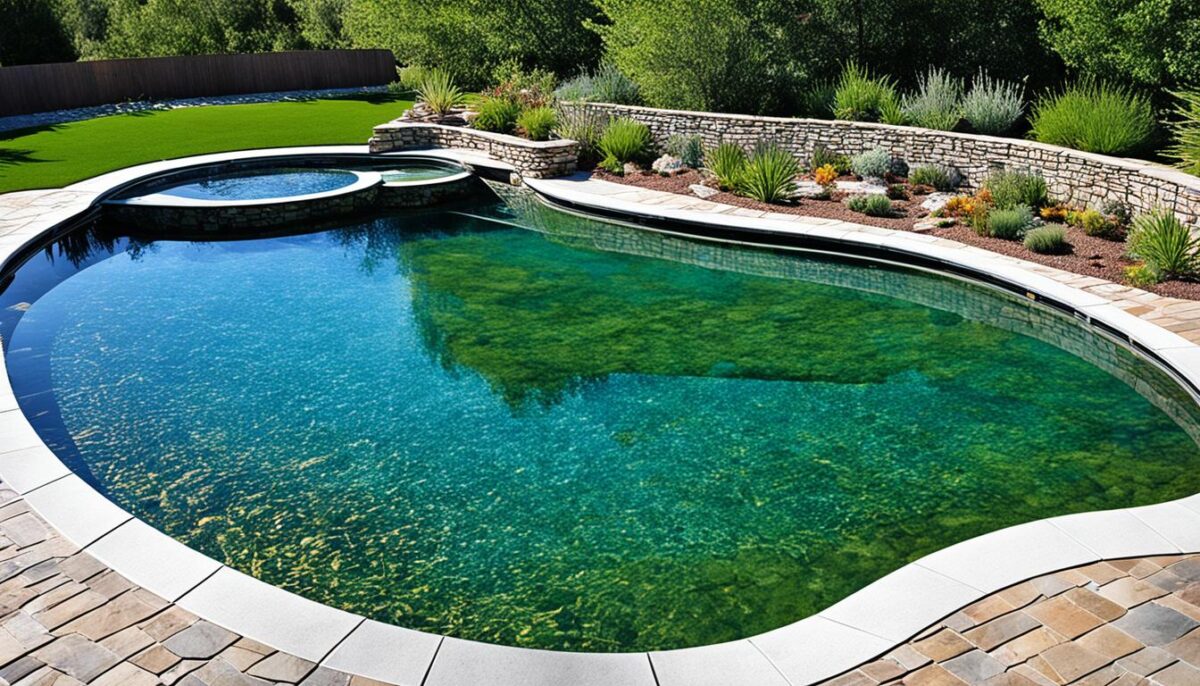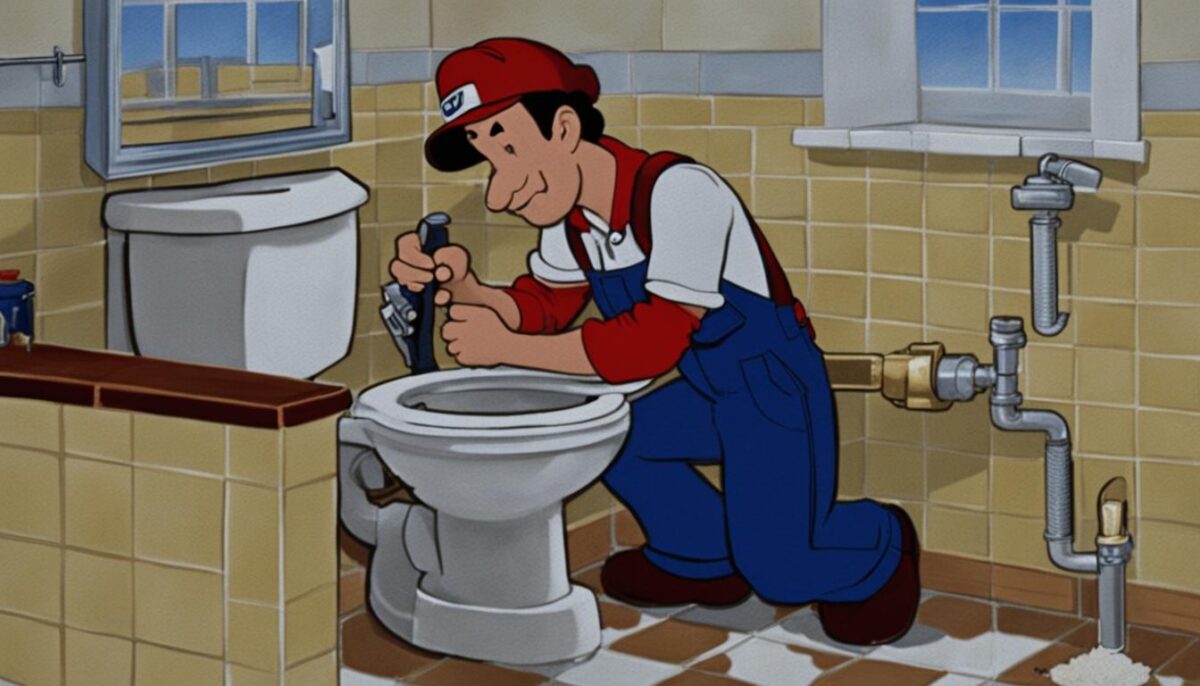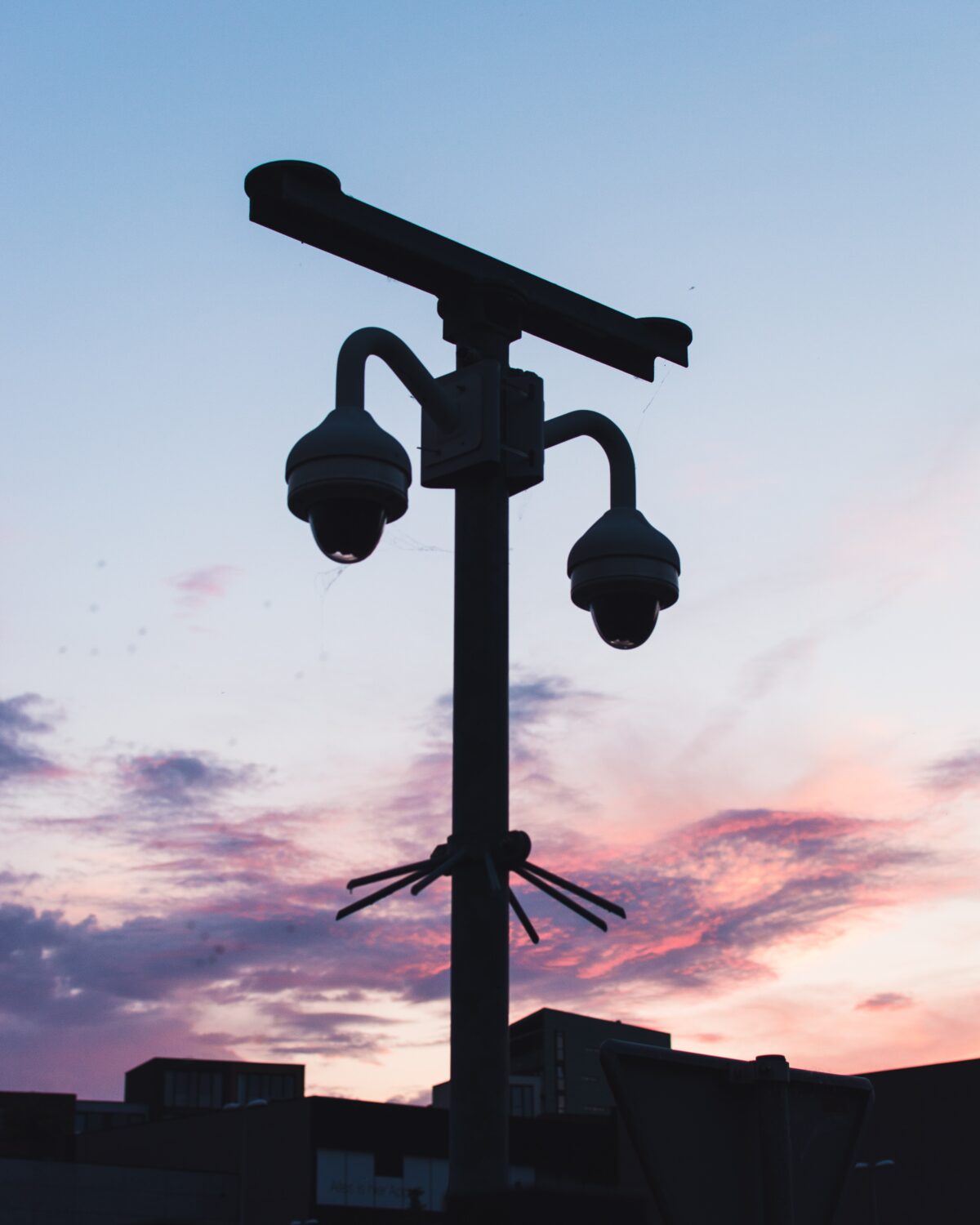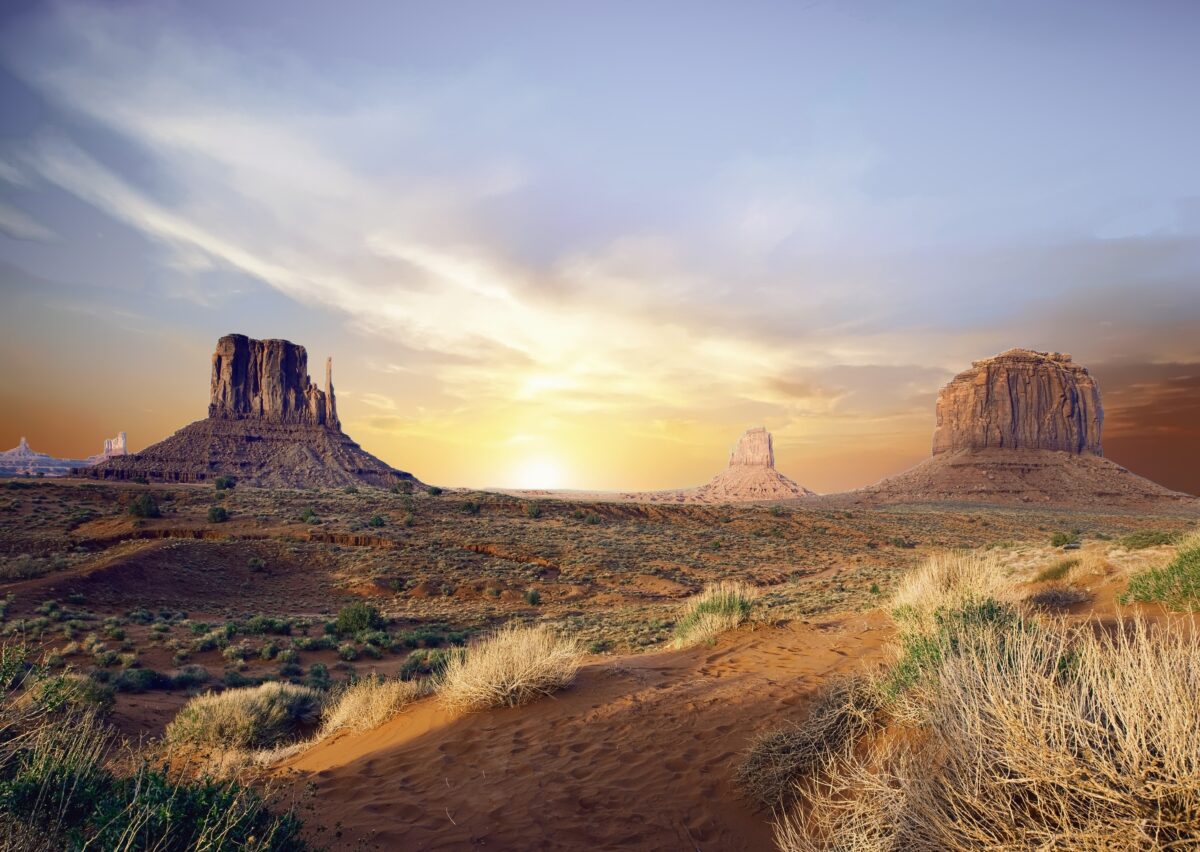Did you know that water damage in American homes costs about $2,700 on average? This shows how big the cost of fixing flood damage can be. Costs range from $1,000 for minor clean water damage to over $5,000 for black water damage. These figures cover making a property dry and safe, but don’t include extra costs like replacing walls or floors.
Experts like Rocky Mountain Restoration say many things affect the price of fixing water damage. These include the type of water and how much damage there is, as well as the size of the area affected. It’s key to get a professional to check things out to get a good estimate. The cost of fixing water damage can vary a lot, depending on what’s needed and what insurance covers.
Key Takeaways
- The national average cost of flood damage restoration is around $2,700.
- Minor clean water damage repairs average at $1,000.
- Significant black water damage repairs can exceed $5,000.
- Costs often exclude expenses for reconstruction like drywall or flooring replacement.
- Factors influencing water damage costs include the type of water, extent of damage, and size of the affected area.
- Insurance coverage can impact overall water damage repair prices.
- Professional evaluations are essential for accurate cost estimation.
Factors That Influence Water Damage Costs
It’s important for homeowners to know what affects water damage restoration costs. Acting fast and getting professional help can greatly reduce these costs. This helps in saving money.
Type of Water Involved
The kind of water causing the damage is crucial in figuring out the cost. Clean water, like from a leaky faucet, is the safest and usually saves most items. But, grey water from appliances has more harmful stuff, making some items like carpet pads not worth saving.
Black water, which comes from sewers or natural water, is very dangerous. It often means you have to throw away anything that can get wet and soak up water. This keeps everyone safe.
Extent and Duration of the Damage
How long and how much water was there makes a big difference in cleanup costs. If water sits around, it can turn into the dangerous black water type, which is worse for health. Getting help quickly is key to stop mold and keep costs down.
For instance, Josh from Lotus Restoration Services was right on time for an AC water leak job in the attic. This quick action helped avoid more damage.
Size of the Affected Area
The bigger the area hit by water, the more it will cost to fix. Costs depend on how big the area is and what surfaces got wet, like floors, walls, and ceilings. The more damage to the structure, the more work and money needed.
Matt Ross from Lotus Restoration Services was known for his great work and keeping customers updated. He made sure the job was done right, earning praise for his service.
Getting a full check-up can help figure out the costs for fixing water damage. Lotus Restoration Services knows how to handle these issues well. They help customers save a lot of money by acting fast and providing expert help.
Water Damage Insurance Claims and Coverage Considerations
Filing water damage insurance claims can surprise homeowners, as fixing the damage can be costly. Insurance helps cover these costs, but the coverage varies by policy and damage type.
Experts like Rocky Mountain Restoration and Lotus Restoration Services highlight the need to know your policy well. Not all water damage is covered equally. Understanding your policy can help avoid unexpected costs if damage happens.
- Specialized Equipment: Restoration needs advanced tools.
- Certified Technicians: Trained pros ensure repairs are done right.
- Materials and Travel Costs: These can greatly increase the total cost.
Quick and effective repairs are key. Acting fast can stop more damage and lower repair costs. Make sure your repair contract outlines timelines and what work is included for full restoration.
| Cause of Damage | Repair Prices | Insurance Coverage |
|---|---|---|
| Clean Water | $1,000 – $4,000 | Generally Covered |
| Grey Water | $3,000 – $7,000 | Partial Coverage |
| Black Water | $5,000 – $10,000 | Limited Coverage |
In summary, knowing the cost of water damage depends on the damage size and your insurance policy details. Being informed and acting quickly can greatly reduce repair costs and financial impact.
Conclusion
Water damage can lead to big financial losses. This is due to the type of water, how much damage there is, and how long it lasted. Homeowners often face high costs for fixing water damage. It’s key to act fast and get professional help to lower these costs.
Dealing with cleanup fees for water damage can be tough. But, insurance can help a lot. It’s important for homeowners to know what their insurance covers. Working with experts like Rocky Mountain Restoration and Lotus Restoration Services can give valuable advice on what to do next.
To lessen the cost of water damage, taking steps before and during emergencies is crucial. Keeping up with maintenance, acting quickly when problems happen, and having good insurance helps a lot. Being ready and proactive can make handling water damage costs easier.
FAQ
Can water damage be expensive?
Yes, water damage can be very expensive. On average, fixing flood damage costs about $2,700 nationally. Minor clean water damage might cost around $1,000. But, significant black water damage can go over $5,000.
These costs usually cover drying and making the property safe. But, they don’t include costs like replacing drywall or flooring.
What factors influence the cost of water damage restoration?
Several factors affect the cost of fixing water damage. These include the type of water, the damage’s extent and duration, and the affected area’s size. The water’s nature, how long it’s been there, and the affected area’s size and materials all play a role in the final cost.
How does the type of water involved affect the cost of water damage repair?
The cost changes based on the water’s contamination level. Clean water is less risky and often saves more items. Grey water, with more contaminants, might make some items like carpet pads unsalvageable.
Black water, being highly contaminated, often requires disposing of porous materials. This significantly raises restoration costs.
Why is the duration that water has been present a cost factor?
The longer water sits before action, the worse the situation can get. Clean water might turn into grey or black water, increasing health risks and the chance of mold. This means more extensive restoration efforts and higher costs.
How does the size of the affected area impact water damage cleanup fees?
The size and surfaces affected by water play a big part in costs. Larger areas with more structural damage need more labor, materials, and equipment. This leads to higher repair costs.
What role do insurance policies play in water damage repair costs?
Insurance can greatly affect the cost of fixing water damage. Policies often cover a big part of the costs, but it depends on the damage’s source and nature. Knowing your insurance coverage is key to managing costs well. Standardized pricing is used for insurance-covered losses, but non-covered incidents can vary.
How can homeowners mitigate water damage restoration expenses?
Homeowners can lower costs by acting fast on water damage, keeping up with property maintenance, and knowing their insurance well. Getting help from professionals like Rocky Mountain Restoration and Lotus Restoration Services quickly can limit damage and cut costs. Acting early is crucial to stop further damage and control restoration fees.
These costs usually cover drying and making the property safe. But, they don’t include costs like replacing drywall or flooring.

